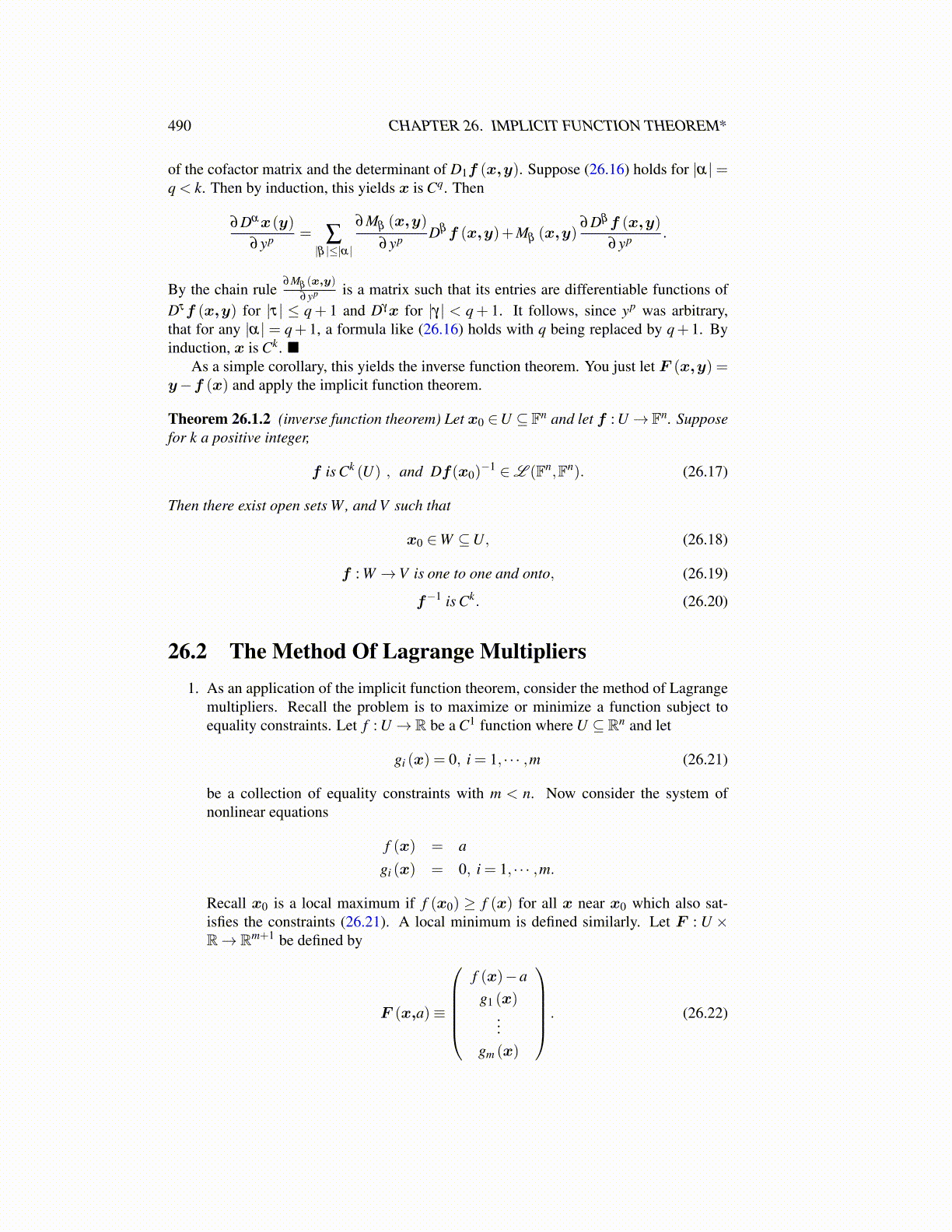
490 CHAPTER 26. IMPLICIT FUNCTION THEOREM*
of the cofactor matrix and the determinant of D1f (x,y). Suppose (26.16) holds for |α|=q < k. Then by induction, this yields x is Cq. Then
∂Dαx(y)
∂yp = ∑|β |≤|α|
∂Mβ (x,y)
∂yp Dβf (x,y)+Mβ (x,y)∂Dβf (x,y)
∂yp .
By the chain rule∂Mβ (x,y)
∂yp is a matrix such that its entries are differentiable functions ofDτf (x,y) for |τ| ≤ q+ 1 and Dγx for |γ| < q+ 1. It follows, since yp was arbitrary,that for any |α| = q+ 1, a formula like (26.16) holds with q being replaced by q+ 1. Byinduction, x is Ck. ■
As a simple corollary, this yields the inverse function theorem. You just let F (x,y) =y−f (x) and apply the implicit function theorem.
Theorem 26.1.2 (inverse function theorem) Let x0 ∈U ⊆ Fn and let f : U→ Fn. Supposefor k a positive integer,
f is Ck (U) , and Df(x0)−1 ∈L (Fn,Fn). (26.17)
Then there exist open sets W, and V such that
x0 ∈W ⊆U, (26.18)
f : W →V is one to one and onto, (26.19)
f−1 is Ck. (26.20)
26.2 The Method Of Lagrange Multipliers1. As an application of the implicit function theorem, consider the method of Lagrange
multipliers. Recall the problem is to maximize or minimize a function subject toequality constraints. Let f : U → R be a C1 function where U ⊆ Rn and let
gi (x) = 0, i = 1, · · · ,m (26.21)
be a collection of equality constraints with m < n. Now consider the system ofnonlinear equations
f (x) = a
gi (x) = 0, i = 1, · · · ,m.
Recall x0 is a local maximum if f (x0) ≥ f (x) for all x near x0 which also sat-isfies the constraints (26.21). A local minimum is defined similarly. Let F : U ×R→ Rm+1 be defined by
F (x,a)≡
f (x)−ag1 (x)
...gm (x)
. (26.22)